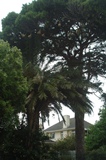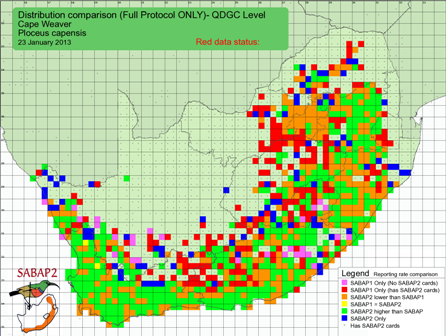Weaver news
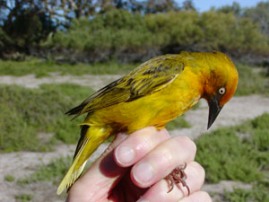
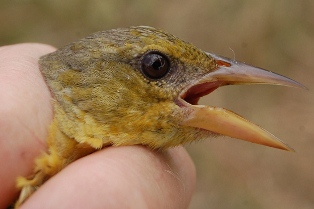
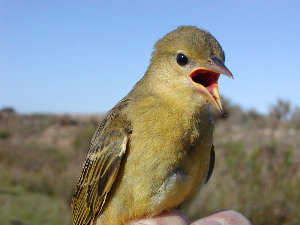
The Cape Weaver Ploceus capensis is a large weaver, with a long bill. The adult male (above left) in breeding plumage is bright yellow with varying amounts of orange-brown on the face, a black bill, and a pale eye. The female (above middle) is olive, with a yellow throat and belly, brown eye, and pale horn bill. Adult females usually have brown eyes, but 19% have pale eyes in summer and thus eye colour alone cannot be used to sex this species (read more at here). The male is in non-breeding plumage for a relatively short time when it resembles the female but is yellower below, and retains the pale eye. The juvenile (above right) is dull, with a yellowish belly.
No subspecies of the Cape Weaver are recognised and it is a near endemic to South Africa (see map left, based on The Atlas of Southern African Birds and on SABAP2). The stronghold of the species is in the Western Cape. Currently it seems to have decreased its range in some areas, particularly in the northern Free State and North-West Province (red grids on the map). The Cape Weaver has a relatively long bill that is adapted to feeding on a wide variety of vegetable and animal matter. There is a long list of recorded food items, including various insects, spiders, seeds, nectar, and fruit. Females appear to have a more varied diet than males. They forage on the ground and may turn over small stones and dried cow-pats. They also search the bark of trees for insects, and hawk flying insects. Cape Weavers are generalist nectar-feeders that are now considered to be the major pollinators of aloes. This species is found in flocks, and it forms large roosts throughout the year, which may be shared with other weavers and species. In some areas they leave their breeding sites, and do not return until the following season. Anting has been recorded. Cape Weavers may bathe even in misty or rainy conditions. The Cape Weaver is colonial and highly polygynous with up to 7 females per male. Males are strongly territorial within a colony, and males chase intruders off neighbouring territories. The nest (photo left from phown 1094) is built by the male. The nest is a bulky, kidney-shaped structure, with the entrance below and usually without an entrance tunnel. Males display from their nests to attract females. If a female accepts a nest, she lines it with fine grass. The Cape Weaver has the second-most number of PHOWN records (first is the Southern Masked Weaver). There are 881 PHOWN records currently (see PHOWN summary), providing some useful statistics. Nests are mostly built in trees (n=725), but also in reeds (n=140) and on man-made sites (n=9). Colonies may be large with up to 348 nests recorded, but the average colony size is around 20 nests. Some interesting records are: boomslang raiding colony phown 572 (photo right), colony in shopping mall phown 1260, and nests built on a building phown 1196. Cape Weavers also build their nests near nests of larger birds, like Hadedas or in heronries. Many more PHOWN records are needed for this common species, especially repeat counts of colonies to study variation in colony size through the season and in different years (read more here). Also look out for old nests which may be used by Cape Sparrows Passer melanurus or African Dusky Flycatchers Muscicapa adusta. Submit any weaver nest records to PHOWN (PHOtos of Weaver Nests) via the Virtual Museum upload site. PHOWN summary Previous Wedn: Chestnut-crowned Sparrow-Weaver Full weaver species list |








